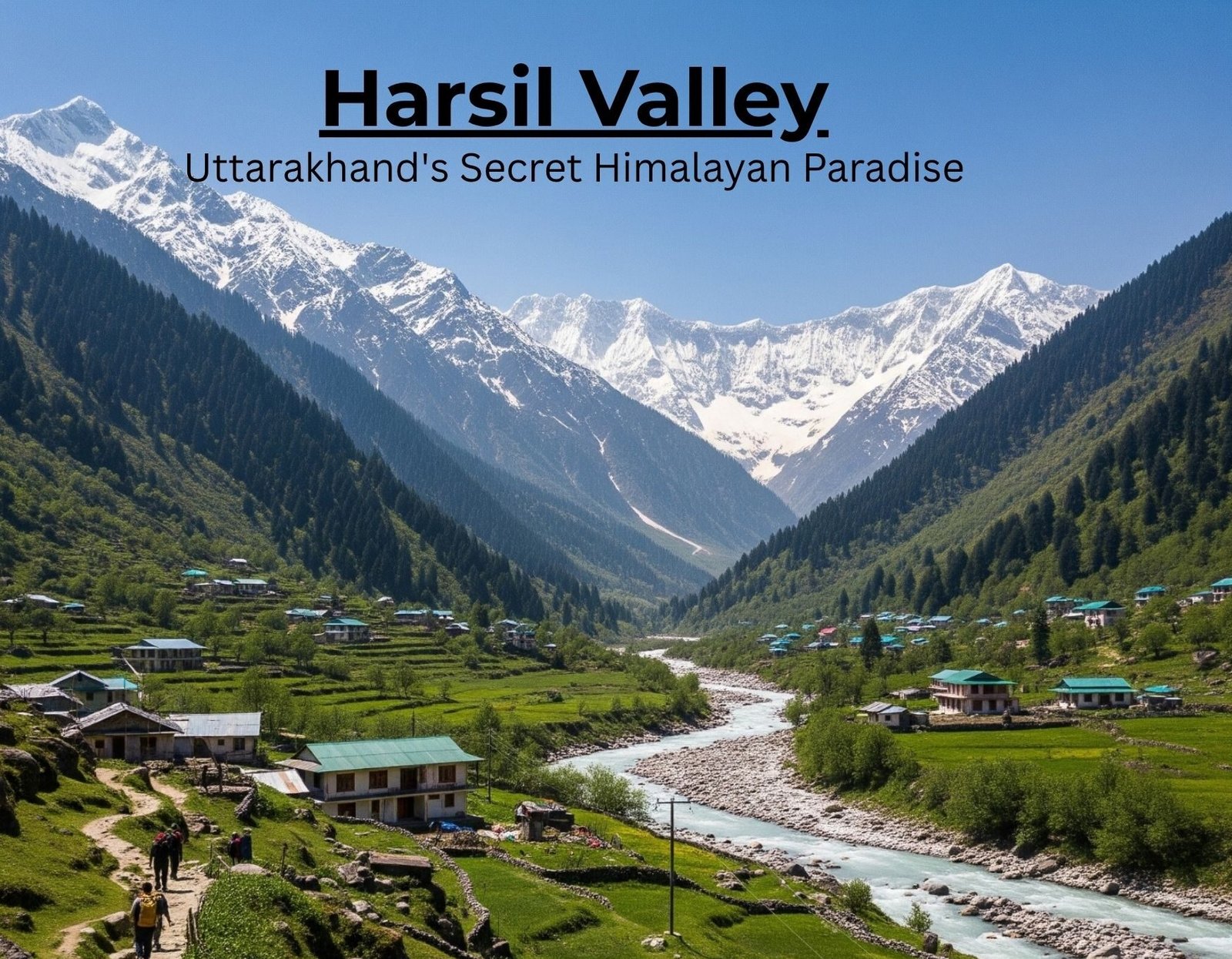There are journeys that take you to a place, and then there are journeys that take you to a different state of being. My trip to Harsil Valley was the latter. It began with an overnight ride from Delhi to Dehradun, a familiar escape from the city’s hum. But from there, the road climbed into a world where the air is thin, time slows down, and the powerful Bhagirathi River, one of the primary tributaries of the Ganga, charts its course from the Gangotri Glacier, giving life to one of the Himalayas’ best-kept secrets.
For those seeking to explore this untouched landscape, here is a quick overview. The journey involves reaching Dehradun and then taking a scenic, long drive into the valley. The heart of the region can be found in its unique villages like Bagori and Mukhwa, and in historical marvels like the cliffside walkway of Gartang Gali. A key tip for travelers: this is a minimalist mountain experience. Expect basic homestays, carry your own essentials, and always respect the local way of life, especially the homes left locked during the winter migration.
The Journey into the Valley of the Gods
The drive from Dehradun to Harsil is where the transformation begins. The air grows colder, the scent of pine fills your lungs, and the Bhagirathi river becomes your constant, roaring companion. This valley isn’t just a location; it’s a living ecosystem defined by glacial streams, apricot and apple orchards, and the hardy communities that call it home.
Bagori: The Village That Sleeps in Winter
My first deep dive into Harsil’s soul was in Bagori, a village that feels like a living museum. I was immediately struck by the sight of over 150 intricately carved wooden houses, most of them locked. The reason, as I soon learned from a warm-hearted aunty who offered me a cup of black tea, is seasonal migration.
For six months every year, when heavy snowfall blankets the valley, the entire village migrates to the warmer climes of Dunda. They leave their homes, their temples, and their orchards behind, only to return when the snow melts. Many of these families were originally relocated from the Nelong Valley after the 1962 Indo-China War, and their stories are tales of resilience.
The culture here is a beautiful fusion. You see Buddhist monasteries standing peacefully beside Hindu temples dedicated to deities like Lal Devta. I was moved to see women wearing both a traditional Mangalsutra and a Buddha locket, a powerful symbol of a harmony where faith unites, not divides.
Mukhwa and Gartang Gali: Where Faith and History Converge
A short distance away lies Mukhwa Village, a place of immense spiritual significance. It is considered the maika (mother’s home) of Goddess Ganga, and it is here that her idol is brought down from the Gangotri temple to be worshipped during the harsh winter months.
The highlight for any adventurer, however, is Gartang Gali. This incredible skywalk, an ancient trade route cut into the sheer cliff face, is a marvel of indigenous Himalayan engineering. This path was once part of the Indo-Tibet Salt Route, used by merchants on mules. Walking on the restored wooden pathway, with the Bhagirathi roaring hundreds of feet below, you feel a profound connection to the grit and ingenuity of those who carved this route through the rock centuries ago.
The Rhythm of Mountain Life
Life in Harsil is dictated by the seasons and the land. I was generously offered fresh apricots and apples by villagers, some of whom mentioned that many apples are left unplucked simply because “who will go all the way up to get them?” It speaks to a life of abundance and simplicity.
The food is soulful and organic. I had some of the most delicious Pahadi Rajma of my life, a local staple. I learned that people still fetch drinking water directly from glacial streams and use traditional sheep-skin mats, passed down through generations, for warmth against the biting cold.
A Conscious Traveler’s Guide to Harsil Valley
- Best Time to Visit: Plan your trip between April and June for the apple blossom bloom or from September to early November for clear skies before the heavy snowfall begins.
- Respect the Homes: Many homes in villages like Bagori will be locked. These are private properties, not abandoned ruins. Please do not trespass.
- Pack Essentials: The markets are minimal. Carry your own food for trekking, a good quality thermal flask, warm layers of clothing, and any necessary medications.
- Embrace Simplicity: Do not expect luxury hotels. The beauty of Harsil lies in its basic, authentic homestays and the hospitality of its people.
- Listen and Learn: The real treasure of Harsil is its people. Take the time to sip tea with them, listen to their stories of migration, and learn about their unique way of life.
A Final Reflection
My journey to Harsil was a profound lesson in what it means to be alive. It was in the quiet conversations over tea, in the taste of freshly picked apricots, in the silence of the misty mountains, and in the warmth of the people who call this challenging paradise home. I went seeking beautiful landscapes, but I found a deeper connection to the resilience of the human spirit.
Harsil taught me that the most beautiful things in life aren’t things at all—they are the moments of quiet connection, the stories shared, and the kindness of strangers in a land where the gods themselves are said to reside.

Leave a Reply